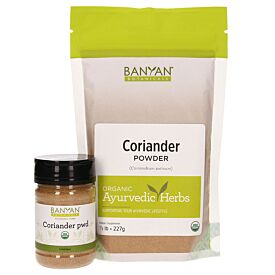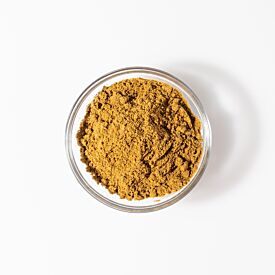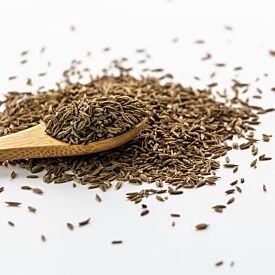Honor the Fall Transition with 5 Food Practices and 4 Cleanse-Friendly Recipes
To create a sadhana, or daily spiritual practice, that connects us with nature means that every meal we make and every bite we take is an opportunity to nourish ourselves consciously. When we choose fresh, wholesome foods, we strengthen our relationship to the elemental rhythms around us.
By honoring the seasonal transitions, we learn to create a fluid, intuitive relationship with our bodies. With autumn’s arriving energy, this is a time for simplifying and slowing down our daily routines. A simple seasonal cleanse can gift us with a beautiful opportunity to tune into these rhythms more deeply.
Give yourself space to contemplate the cycle of the past season, to celebrate all that was sowed and cultivated, and to begin to draw the expansive outward energy to a quieter time for inward reflection and rejuvenation.
“Our moment-to-moment awareness of our connection to nature is the heart of our sadhana practice.”
To support this slowing down, here are a few of my favorite ways to prepare for a cleanse and honor the transition into the fall season with conscious food practices and delicious, nourishing recipes.
5 Conscious Food Practices
-
Clean out your kitchen. Compost or throw out old spices, condiments, and foods in your fridge and pantry that have expired. Take stock of what you have and make a list of what is needed to create a seasonally aligned kitchen.
-
Head to the farmer’s market. This is the best way to see what’s in season locally and support your local farmers. Come early fall, you will find a variety of heirloom apples, pears, dark leafy greens, gourds, and squashes.
-
Experiment with seasonal recipes. Nourish your body with autumn recipes like the ones below, breaking up the routine of your quick summer salad for something like a slow-cooked soup instead.
-
Create a seed sadhana. Grind your spices in a mortar and pestle before adding them to a dish. Allow the practice of hand grinding spices to activate your senses and draw you into the present moment. A beautiful fall masala mix might include cumin, coriander, fenugreek, mustard seed, and fresh ginger.
- Eat with presence and awareness. When we eat consciously, the food we take in becomes a prayer, an opportunity for infusing intention and energy into our bodies, minds, and spirits. So slow down, savor, and give thanks for every bite.

Brown Rice Breakfast Porridge
Ingredients:
- 1 cup brown rice farina
- 2 cups water
- ½ teaspoon cardamom powder
- ¼ teaspoon clove powder
- 1 pinch mineral salt
Directions:
In a small pot, bring water to a boil. Add the brown rice farina and spices, using a fork to whisk together and avoid clumping in the porridge. Reduce heat to a low simmer and cook for five to seven minutes, or until well combined. Remove from heat, transfer to a bowl, and serve hot. Mix in a spoonful of ghee and stewed fall fruit chutney.
Makes 2 servings
Fall Fruit Chutney
Ingredients:
- 8 whole, dried mission figs, coarse chopped, whole, or halved
- 8 whole, dried prunes, coarse chopped, whole, or halved
- 1 fresh apple, cored and chopped
- 1 fresh pear, cored and chopped
- 1 tablespoon ground cinnamon
- ½ teaspoon ground nutmeg
- 1 pinch ground clove
Directions:
In a small pot, combine the ingredients with a splash of water. Cook on low heat until reduced to a jam-like consistency, about 15 minutes.
Makes 2–4 servings
Spiced Coconut Spinach
Ingredients:
- 1 shallot
- 1 large clove of garlic
- ¼ teaspoon mineral salt
- 1 tablespoon ghee
- ¼ teaspoon mustard seeds
- ¼ teaspoon whole cumin seeds
- ¼ teaspoon red pepper flakes
- 1 cup finely sliced asparagus
- 3 cups spinach, washed and chopped
- squeeze of lemon
- 1 tablespoon unsweetened coconut flakes, lightly toasted
Directions:
Place the shallot and garlic on a cutting board, sprinkle with the salt, and chop/mash everything into a paste.
Heat the oil in your largest skillet over medium heat. Add the seeds, cover with a lid, and let them toast. Remove the lid, stir in the red pepper flakes, and let it cook for a minute. Stir in the asparagus, let it cook roughly for another minute, and then stir in the garlic-shallot paste and all of the spinach. Keep stirring until the spinach starts softening and brightening up—about a minute.
Finish with a bit of fresh lemon juice and the coconut flakes.
Makes 2 servings

Kabocha Squash and Red Lentil Soup
Ingredients:
- 1 small kabocha squash, seeded and cubed
- 1 small sweet potato, cubed
- 1 cup red lentils
- ¼ yellow onion, chopped
- 1 cloves garlic, minced
- 1 inch fresh ginger, minced
- 2 tablespoons olive oil or ghee
- 1 tablespoon tamari
- 1 teaspoon turmeric powder
- 1 teaspoon cumin powder
- 1 teaspoon coriander powder
- ½ teaspoon mustard seeds
- ½ teaspoon fenugreek seeds
- 6–7 cups water
- 2 tablespoons white miso paste
Slow Cooker Directions:
Combine all ingredients, except the miso paste, in a slow cooker. Depending on the setting of your slow cooker, cook for two to three hours until tender and soupy. Continue adding water as needed for a soupy consistency.
When finished, stir in the miso paste and adjust seasoning as desired. Serve with a topping of chopped cilantro, sprouts, or greens of your choice.
Stovetop Directions:
If cooking this on a stovetop, lightly heat the pan with ghee and sauté the onions, garlic, and ginger on medium heat for two to three minutes or until fragrant. Combine remaining ingredients, except the miso, cover, and cook for 40–50 minutes.
Stir in the miso paste at the end and season with salt and pepper if desired.
Makes 4 servings
Recipes and kabocha squash photo by Claire Ragozzino / Vidya Living













